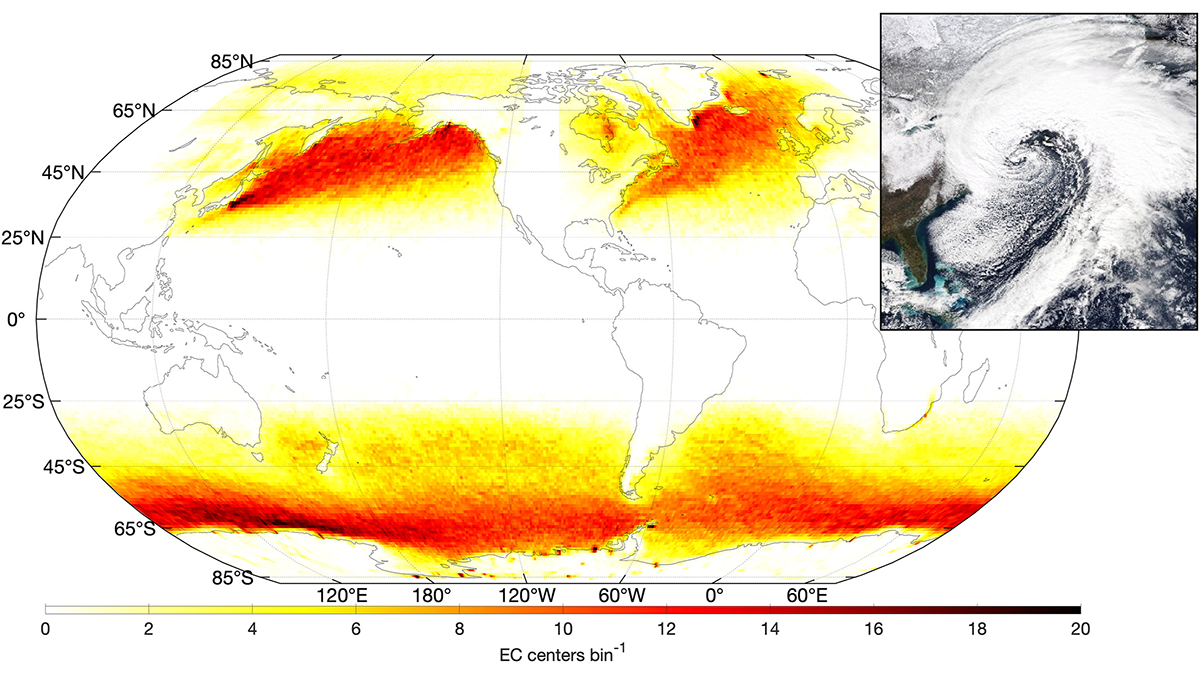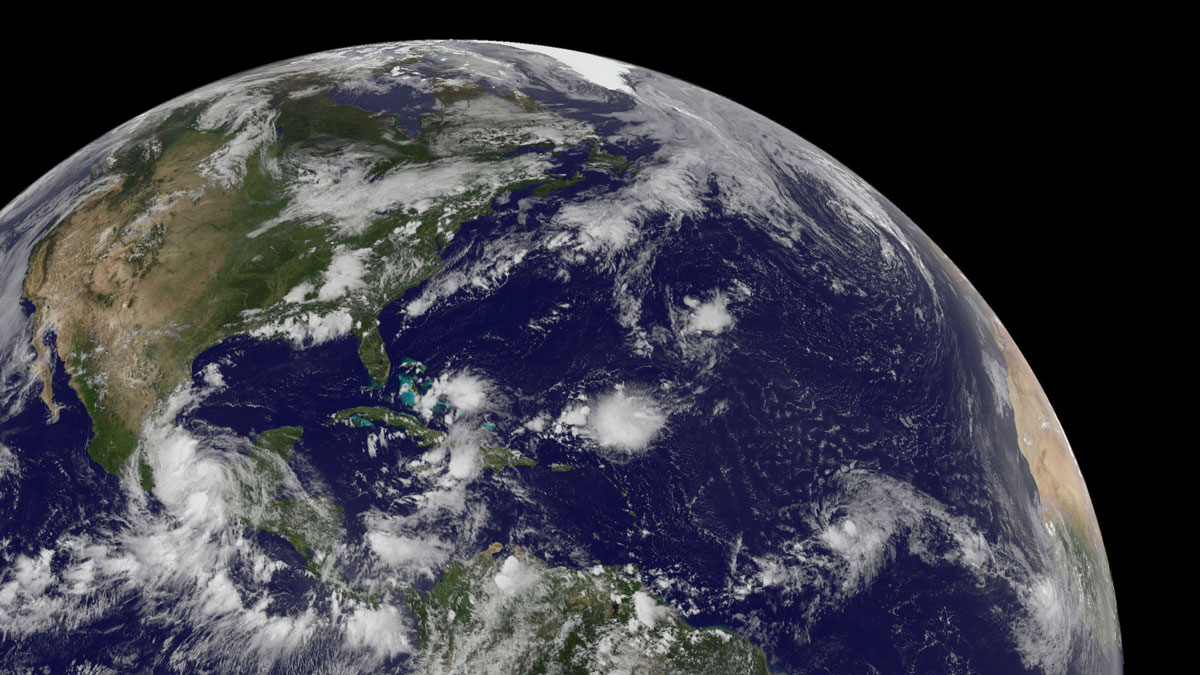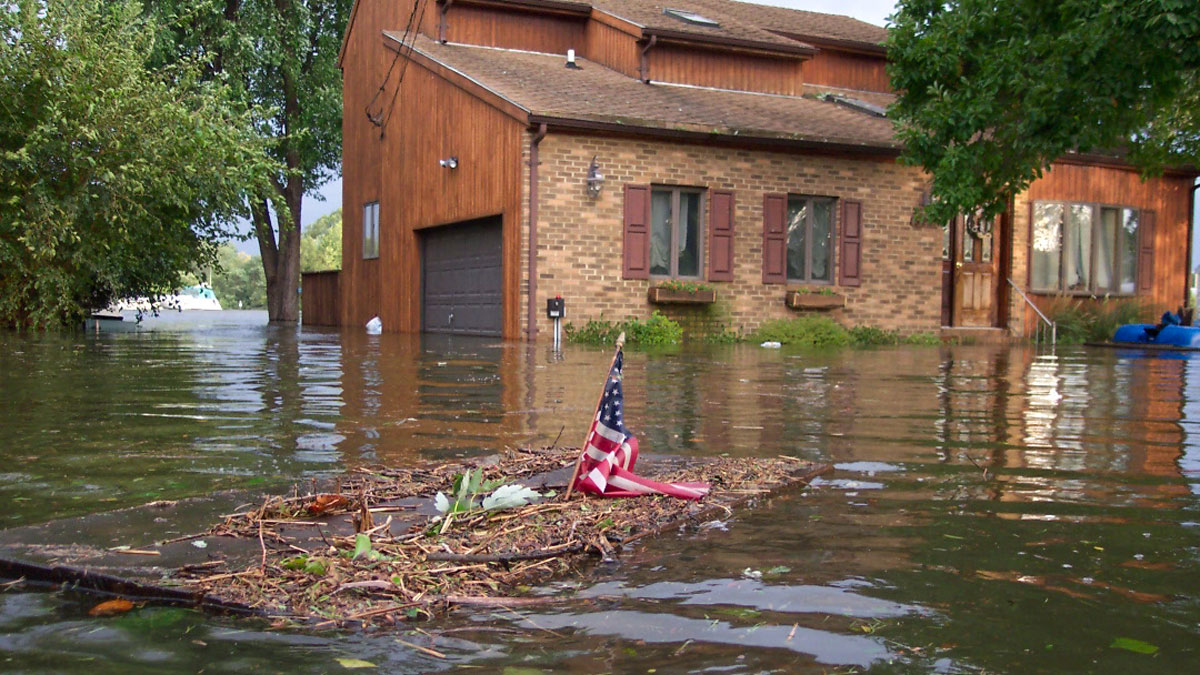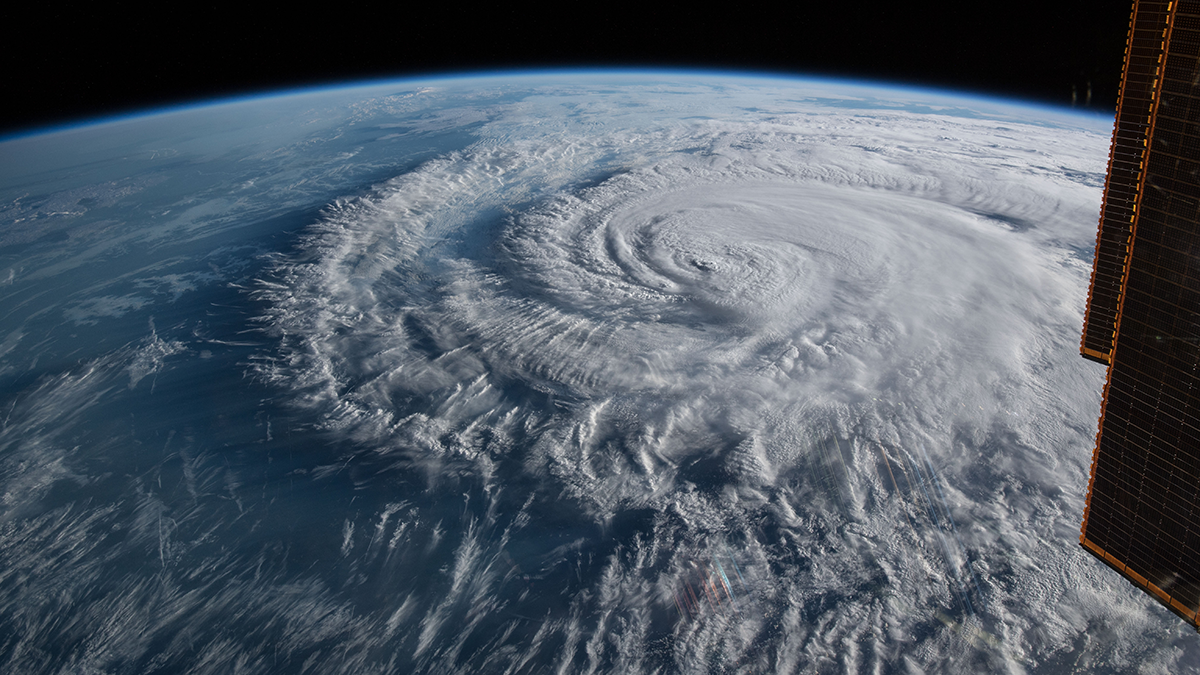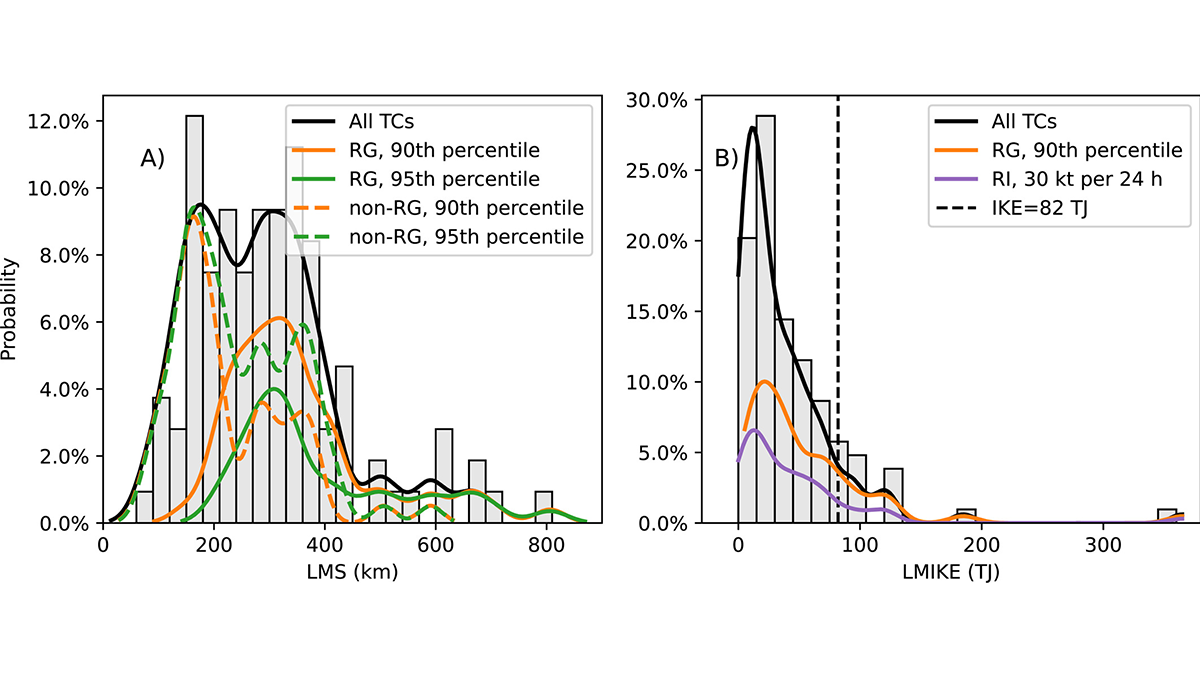Scientists are using acoustic sensors to collect data and improve hurricane preparedness and coastal resilience in the archipelago of San Andrés.
hurricanes, typhoons, & cyclones
Tracking Ocean Waves from Extratropical Cyclones on Global Scale
A new way of tracking ocean waves with satellite measurements was developed and applied to extratropical cyclones, revealing the effects of storm characteristics on extreme sea states.
An Innovative Approach to Model Complex Hurricane Flood Hazards
A new study shows that it is possible to produce regional assessments of how hurricane flood hazards change due to both evolving storm tides and precipitation rates in a warming climate.
Engineering with Nature to Face Down Hurricane Hazards
Natural and engineered, nature-based structures offer promise for storm-related disaster risk reduction and flood mitigation, as long as researchers can adequately monitor and study them.
Linking African Winds to Atlantic Storms
Simulations suggest that waves in the atmosphere above northern Africa influence the intensity, timing, and location of formation of Atlantic tropical cyclones.
What is the Best Predictor of Landfalling Hurricane Damage?
A new study finds that the minimum sea level pressure, as another measure of hurricane strength, is a better predictor of hurricane damage in the United States than the maximum sustained wind speed.
Ocean Waves Cause Drag Coefficient Asymmetry Within Typhoons
Observations show that, due to ocean waves, the drag coefficients for surface wind stresses have spatial asymmetry within typhoons, which should be considered in weather and climate simulations.
The Rapid Growth of Tropical Cyclones’ Outer Size – A New Concept
A new study focuses on the rapid growth of tropical cyclones and their destructive potential.
The Complex Relationship Between Hurricanes, Air Pollution, and Climate
A new study focuses on the frequency and distribution of tropical cyclones over the past 40 years.


